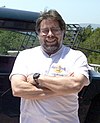Related Research Articles

The Apple Computer 1 (Apple-1), later known predominantly as the Apple I, is an 8-bit motherboard-only personal computer designed by Steve Wozniak and released by the Apple Computer Company in 1976. The company was initially formed to sell the Apple I – its first product – and would later become the world's largest technology company. The idea of starting a company and selling the computer came from Wozniak's friend and Apple co-founder Steve Jobs. One of the main innovations of the Apple I was that it included video display terminal circuitry and a keyboard interface on a single board, allowing it to connect to a low-cost composite video monitor instead of an expensive computer terminal, compared to most existing computers at the time. Contrary to popular belief, it was not the first personal computer to include such video output, predated by machines such as the Sol-20 and add-in cards such as the VDM-1.
Applesoft BASIC is a dialect of Microsoft BASIC, developed by Marc McDonald and Ric Weiland, supplied with the Apple II series of computers. It supersedes Integer BASIC and is the BASIC in ROM in all Apple II series computers after the original Apple II model. It is also referred to as FP BASIC because of the Apple DOS command FP used to invoke it, instead of INT for Integer BASIC.

The Apple II is an early personal computer that was created by Apple Inc. It was one of the first successful mass-produced microcomputer products, and it played a significant role in the early development of the personal computer industry. It has an 8-bit microprocessor.

Stephen Gary Wozniak, also known by his nickname "Woz", is an American electrical engineer, computer programmer, philanthropist, and inventor. In 1976, he co-founded Apple Computer with his early business partner Steve Jobs. Through his work at Apple in the 1970s and 1980s, he is widely recognized as one of the most prominent pioneers of the personal computer revolution.

John Sculley III is an American businessman, entrepreneur and investor in high-tech startups. Sculley was vice-president (1970–1977) and president of PepsiCo (1977–1983), until he became chief executive officer (CEO) of Apple Inc. on April 8, 1983, a position he held until leaving in 1993. In May 1987, Sculley was named Silicon Valley's top-paid executive, with an annual salary of US$10.2 million.

Pirates of Silicon Valley is a 1999 American biographical drama television film directed by Martyn Burke and starring Noah Wyle as Steve Jobs and Anthony Michael Hall as Bill Gates. Spanning the years 1971–1997 and based on Paul Freiberger and Michael Swaine's 1984 book Fire in the Valley: The Making of the Personal Computer, it explores the impact that the rivalry between Jobs and Gates (Microsoft) had on the development of the personal computer. The film premiered on TNT on June 20, 1999.

The Twentieth Anniversary Macintosh is a limited-edition personal computer released in 1997 to mark Apple's 20th birthday. The machine was a technological showcase of the day, boasting a number of features beyond simple computing, and with a price tag aimed at the "executive" market.
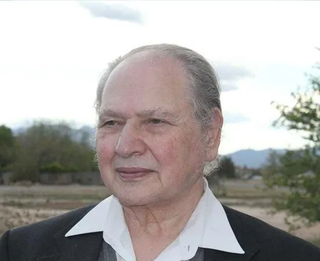
Ronald Gerald Wayne is an American retired electronics industry business executive. He co-founded Apple Computer Company as a partnership with Steve Wozniak and Steve Jobs on April 1, 1976, providing administrative oversight and documentation for the new venture. Twelve days later, he sold his 10% share of the new company back to Jobs and Wozniak for US$800, and one year later accepted a final $1,500 to forfeit any potential future claims against the newly incorporated Apple.

Apple Inc., originally named Apple Computer, Inc., is a multinational corporation that creates and markets consumer electronics and attendant computer software, and is a digital distributor of media content. Apple's core product lines are the iPhone smartphone, iPad tablet computer, and the Macintosh personal computer. The company offers its products online and has a chain of retail stores known as Apple Stores. Founders Steve Jobs, Steve Wozniak, and Ronald Wayne created Apple Computer Co. on April 1, 1976, to market Wozniak's Apple I desktop computer, and Jobs and Wozniak incorporated the company on January 3, 1977, in Cupertino, California.
A universal remote is a remote control that can be programmed to operate various brands of one or more types of consumer electronics devices. Low-end universal remotes can only control a set number of devices determined by their manufacturer, while mid- and high-end universal remotes allow the user to program in new control codes to the remote. Many remotes sold with various electronics include universal remote capabilities for other types of devices, which allows the remote to control other devices beyond the device it came with. For example, a VCR remote may be programmed to operate various brands of televisions.
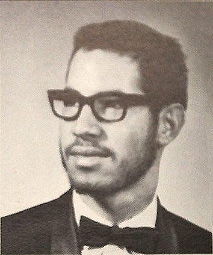
Bill Fernandez is a user-interface architect and innovator who was Apple Computer's first full time employee when they incorporated in 1977 and was issued badge number 4. He is the son of Jeryy Fernandez and Bambi Fernandez. He is credited with introducing fellow Homestead High School student Steve Jobs to his friend Steve Wozniak and developing schematics for the Apple II so the computer could be mass produced.

Synertek, Inc. was an American semiconductor manufacturer founded in 1973. The initial staff consisted of Bob Schreiner, Dan Floyd, Jack Balletto, and Gunnar Wetlesen and Zvi Grinfas. Schreiner, Floyd, Balletto and Wetlesen were all formerly of Fairchild Semiconductor, and Synertek is thus one of the many "Fairchildren". The company became a major vendor during the late 1970s and early 1980s on the strength of their licensed production of the MOS 6502, one of the most successful microprocessors of the era. Synertek won supply deals with Apple Computer and Atari, who would produce millions of home computer and games consoles with Synertek 6502's inside.
Alex Fielding is an American engineer and manager. He is the CEO and co-founder of Privateer Space, a space startup with a global online marketplace that aims to connect customers seeking planetary data with orbiting satellites and AI. He co-founded the company with Apple co-founder Steve Wozniak and MacArthur Genius Moriba Jah. Privateer announced in 2023 that it had grown the business from the Google Maps of space to become the first AI powered space data ride sharing platform with an upcoming satellite autopilot system called Pono set to fly on SpaceX in December 2023. The International Space Station National Labs, in partnership with Privateer announced a deal whereby Privateer publicly tracks and displays mission data on International Space Station telemetry, astronauts, and mission objectives live on the ISS National Labs website. He was co-founder and CEO of robotics company Ripcord, Inc from 2014 to 2021.
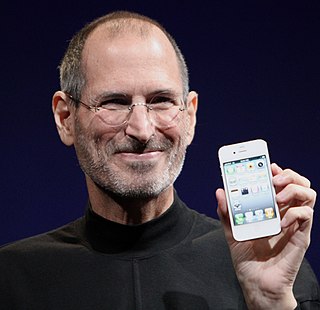
Steven Paul Jobs was an American businessman, inventor, and investor best known for co-founding the technology giant Apple Inc. Jobs was also the founder of NeXT and chairman and majority shareholder of Pixar. He was a pioneer of the personal computer revolution of the 1970s and 1980s, along with his early business partner and fellow Apple co-founder Steve Wozniak.
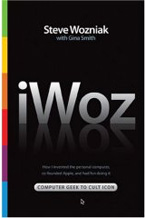
iWoz: From Computer Geek to Cult Icon: How I Invented the Personal Computer, Co-Founded Apple, and Had Fun Doing It is a 2006 New York Times bestselling autobiography by computer engineer and programmer Steve Wozniak. It was co-authored by writer Gina Smith and published by W. W. Norton & Company.
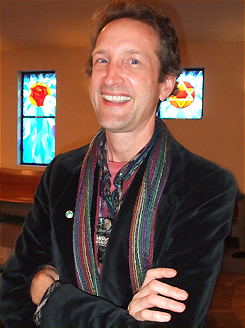
Daniel Kottke is an American businessman known for having been a college friend of Steve Jobs and one of the first employees of Apple Inc. He met Jobs at Reed College in 1972, and they trekked together through India for spiritual enlightenment and to the All One Farm. In 1976, Kottke realized his interest in computers when Jobs hired him to assemble hobbyist computer projects and then to be a part-time employee at the newly founded Apple Computer. There, he debugged the Apple II family, prototyped the Apple III and Macintosh, and endured the IPO where Steve Wozniak assigned Kottke some of his own stock. He was portrayed in several films about Apple.

Jobs is a 2013 American biographical drama film based on the life of Steve Jobs, from 1974 while a student at Reed College to the introduction of the iPod in 2001. It is directed by Joshua Michael Stern, written by Matt Whiteley, and produced by Stern and Mark Hulme. Steve Jobs is portrayed by Ashton Kutcher, with Josh Gad as Apple Computer's co-founder Steve Wozniak. Jobs was chosen to close the 2013 Sundance Film Festival.

Chuck Colby was an electronics engineer and chief-inventor, founder and president of Colby Systems Corporation, a company that created the first DVR-based video surveillance systems but is also very notable as a pioneer in portable computing, being the first to market both DOS and Macintosh portable computers, as well as a remarkable number of other technological firsts.

Steve Jobs is a 2015 biographical drama film directed by Danny Boyle and written by Aaron Sorkin. A British-American co-production, it was adapted from the 2011 biography by Walter Isaacson and interviews conducted by Sorkin. The film covers fourteen years in the life of Apple Inc. co-founder Steve Jobs, specifically ahead of three press conferences he gave during that time - the formal unveiling of the Macintosh 128K on January 24, 1984; the unveiling of the NeXT Computer on October 12, 1988; and the unveiling of the iMac G3 on May 6, 1998. Jobs is portrayed by Michael Fassbender, with Kate Winslet as Joanna Hoffman and Seth Rogen, Katherine Waterston, Michael Stuhlbarg, and Jeff Daniels in supporting roles.

Frederick Rodney Holt is an American Electrical engineer and political activist. He is Apple employee #5, and developed the unique power supply for the 1977 Apple II. Actor Ron Eldard portrayed him in the 2013 film, Jobs.
References
- 1 2 3 4 5 6 7 Wozniak, Steve; Smith, Gina (2006). iWoz: Computer Geek to Cult Icon: How I Invented the Personal Computer, Co-Founded Apple, and Had Fun Doing It. W. W. Norton & Company. ISBN 978-0-393-06143-7. OCLC 502898652.
- ↑ "Core Trademark" owned by Core International, Inc
- ↑ The CL9 technology patent from FreePatentsOnline.com
- 1 2 Article on the CORE from KTronics, LC
- ↑ "Wozniak Unit To Sell Assets" from The New York Times
- ↑ Answer to another reader letter Archived 2015-07-16 at the Wayback Machine from Woz.org
